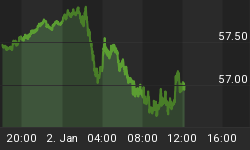A real time recession indicator constructed from a composite of leading economic indicators, high frequency economic data, and SP500 pricing model continues to suggest that the US economy is NOT in recession.
This composite indicator utilizes data from the Economic Cycle Research Institute (WLI, LEI), the Philadelphia Federal Reserve (Aruoba-Diebold-Scotti Business Conditions Index), and the Chicago Federal Reserve (Chicago Fed National Activity Index). Furthermore, two SP500 price models (one proprietary and one not) are monitored. Earlier in the month, the data from the regional Federal Reserves and the ECRI were soft, but collectively they did NOT add up to a recession. In addition, the priced based models are far from confirming a recession.
Another model that I have developed is based upon SP500 earnings. In this case, I am looking at the SP500 price to earnings ratio. Earnings are normalized over the past 5 years. I am looking for statistically significant extreme readings in the PE ratio. These are identified by the black dots in figure 1, a weekly chart of the SP500. The indicator in the lower panel is an analogue representation of past recessionary periods as determined by the National Bureau of Economic Research (NBER). When the value is depressed, the economy is in recession.
Figure 1. SP500/ weekly
![]() Larger Image
Larger Image
What I have found, over the past 50 years of data, is that these extreme readings in the PE ratio typically occur near market tops as earnings begin to falter. Extreme readings can occur at other times, especially when the market is under stress as in 1987 or 1998, but it is a breakdown in the trend in earnings that coincides with the onset of a recession. These are identified by the red vertical bars in figure 1.
As you can see in figure 1, the breakdown in earnings correctly anticipated the recessions in 2008 and 2001. Going back to 1969, there have been 7 recessions as defined by NBER criteria, and 6 out of 7 were correctly identified by this methodology. The lone miss was in the 1980 recession, but then again, this was a very short recessionary period where prices on the SP500 lost little ground during that time. In addition, there was a false positive in 1977 where there was no recession but the SP500 lost about 10% before bottoming. The 1969 to 1981 period is shown in figure 2.
Figure 2. SP500/ weekly
![]() Larger Image
Larger Image
Returning to figure 1 and our current situation, it would take a close below the 1200 level on the SP500 before this model would indicate the onset of a recession. In addition, our real time recession indicator continues to show that a recession is not likely. Lastly, getting the economic headwinds correct is important, but this doesn't change my contention that the price action is more consistent with a market top as opposed to a launching pad to a new bull market.
















